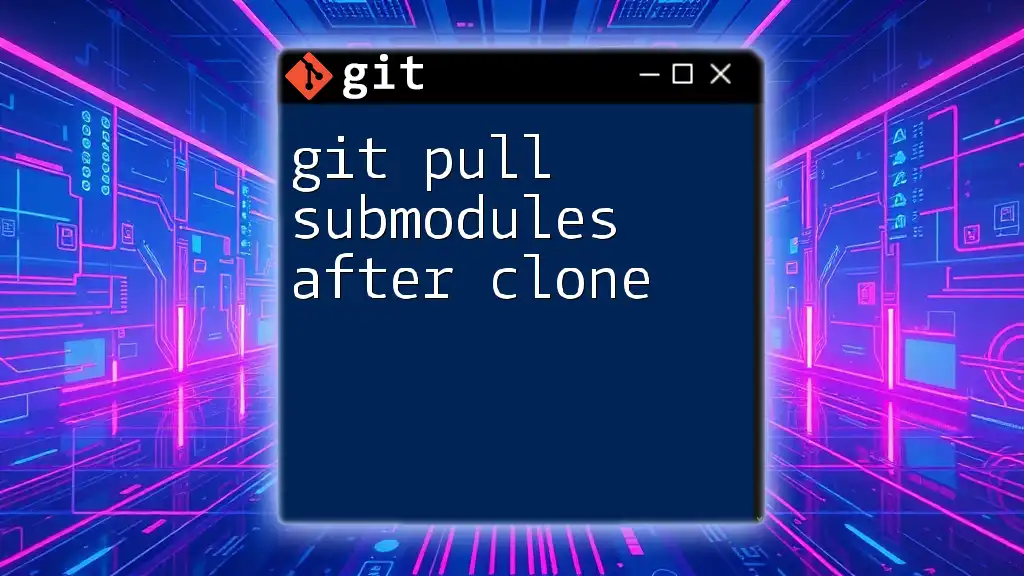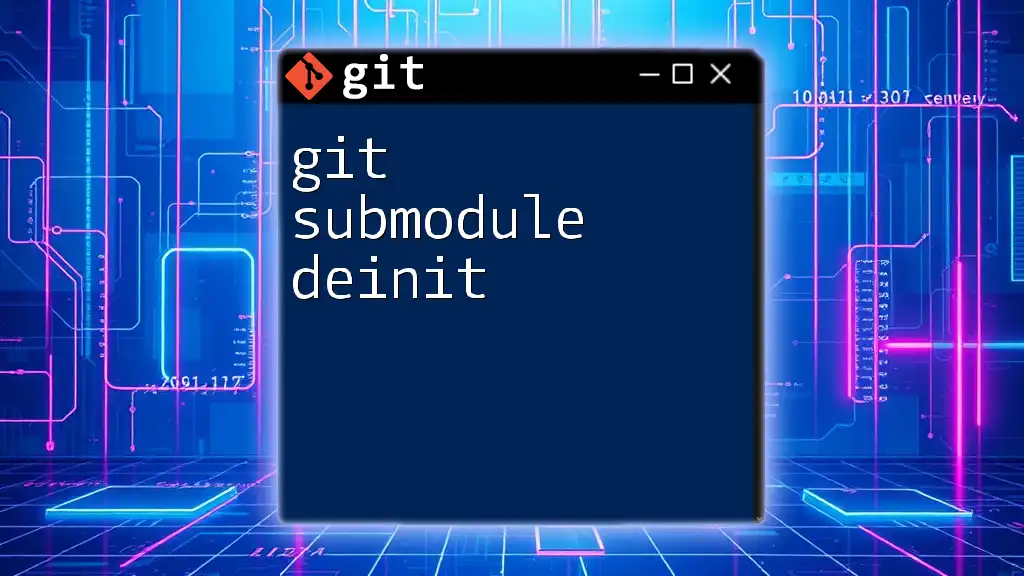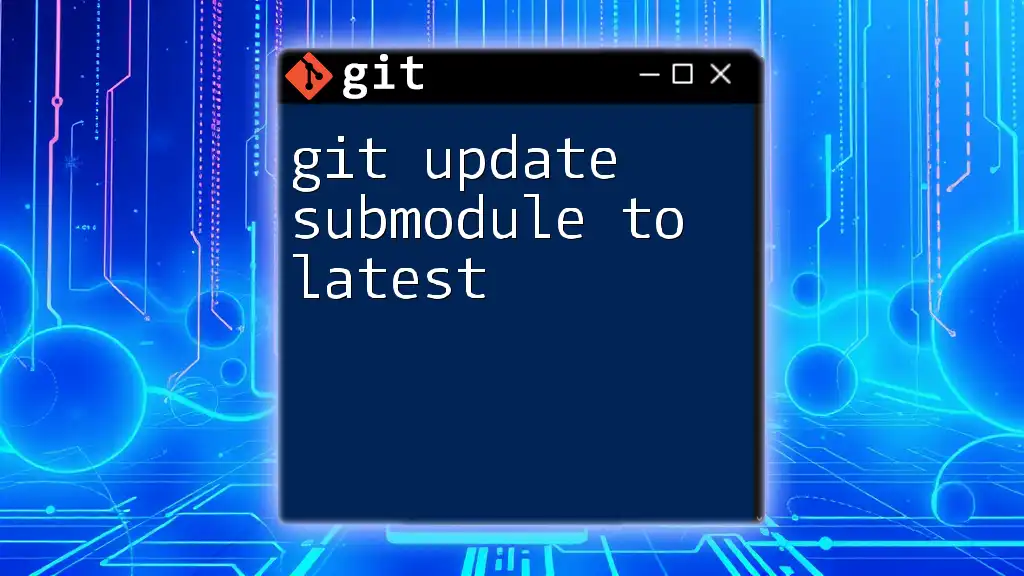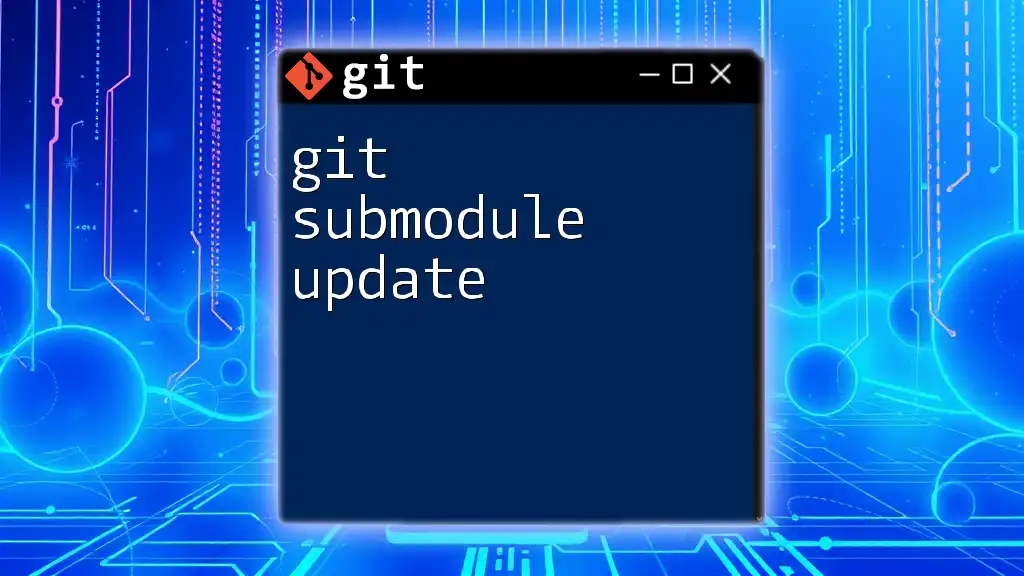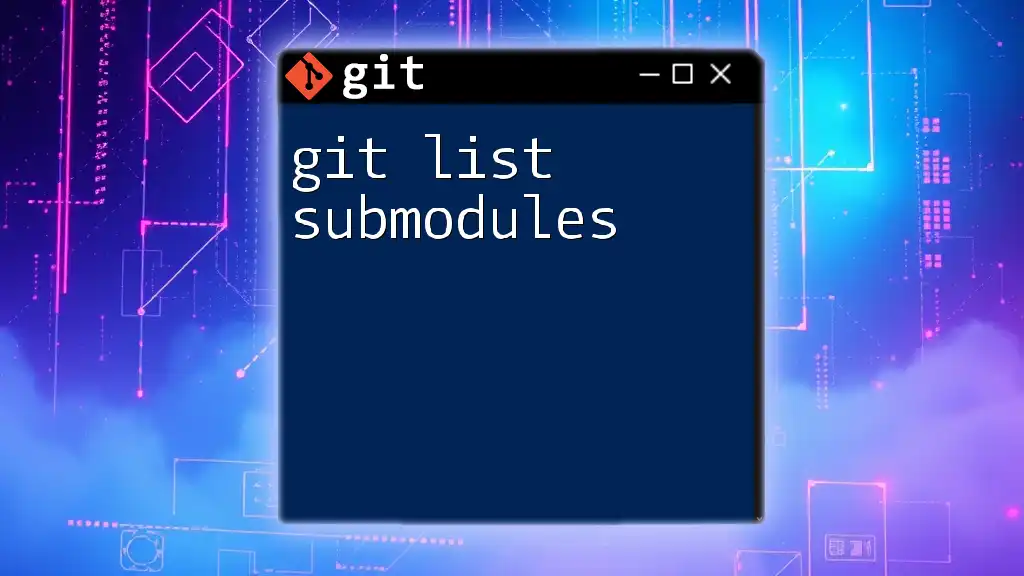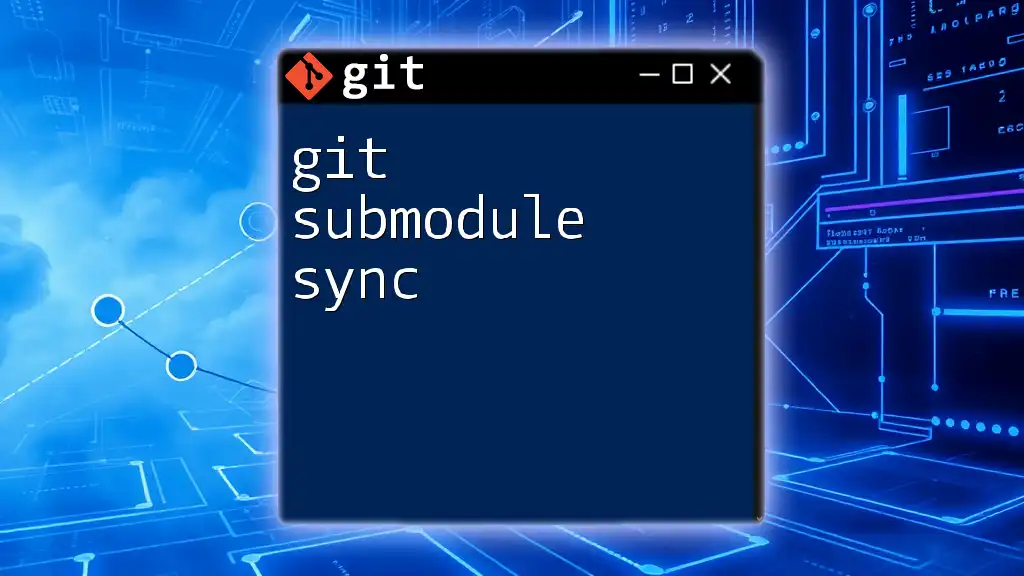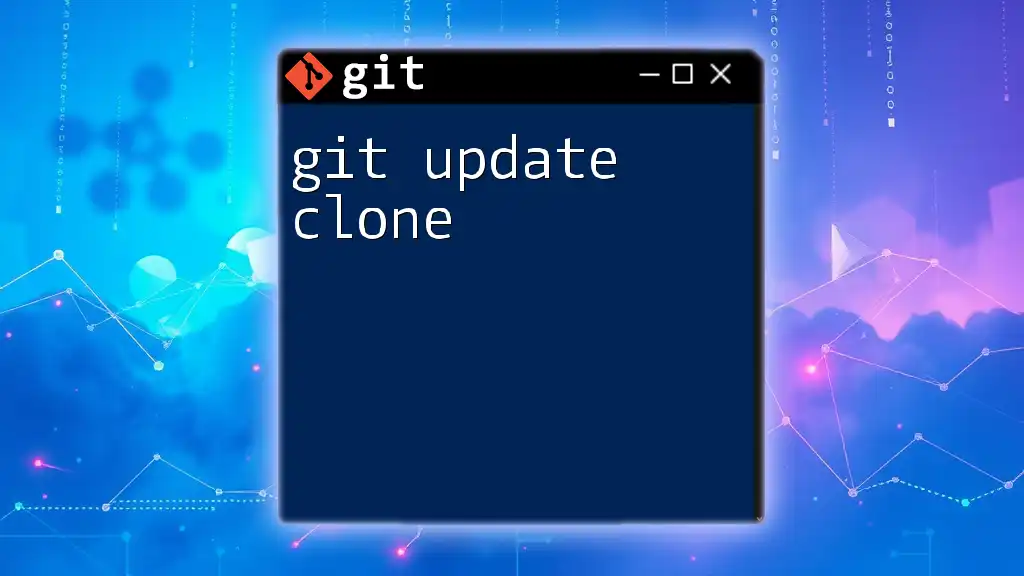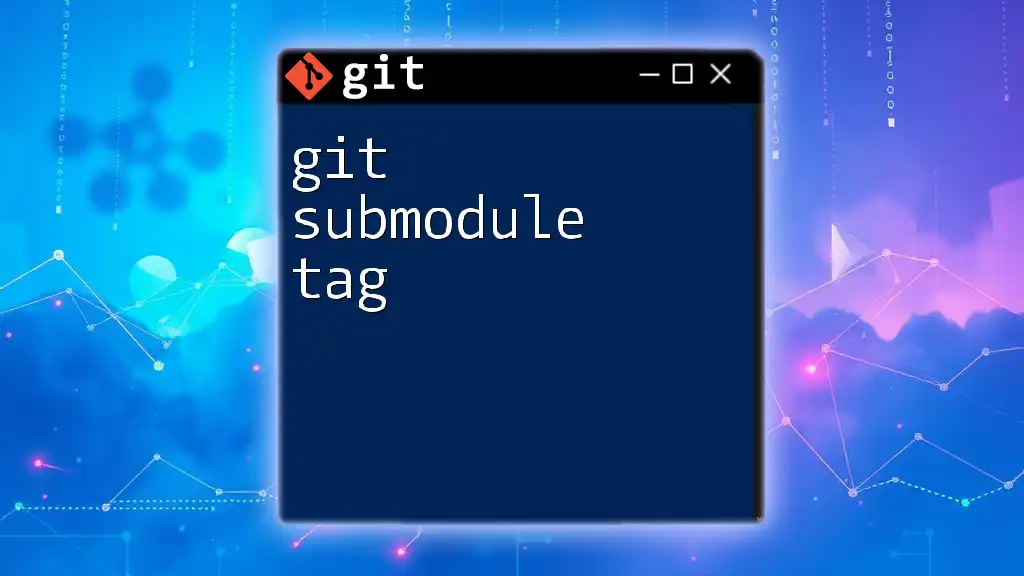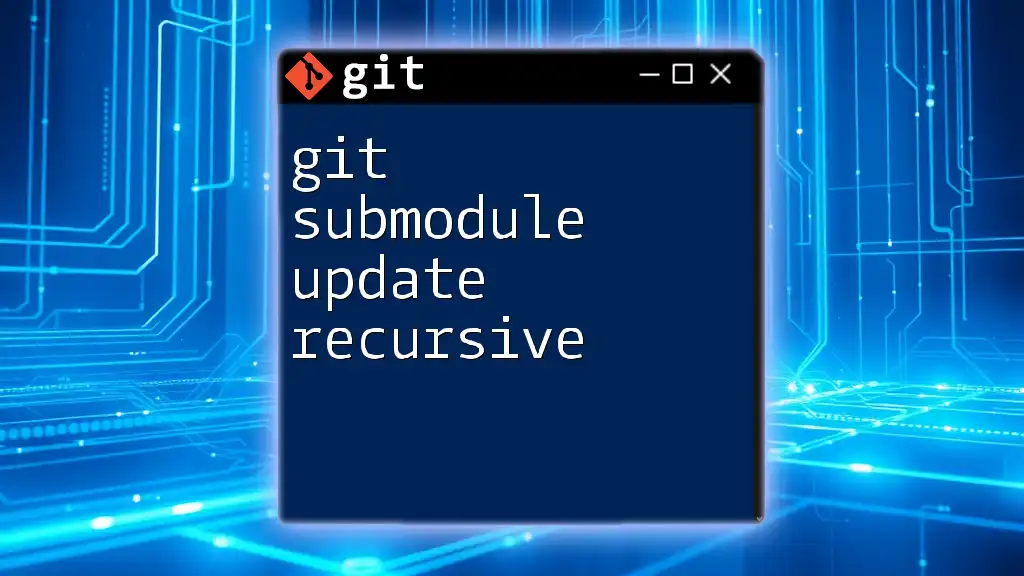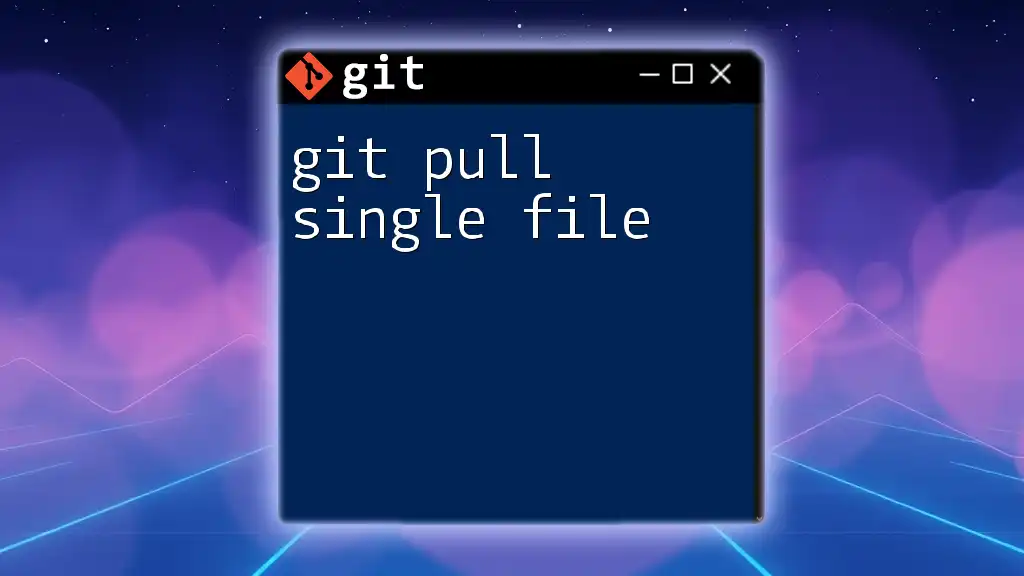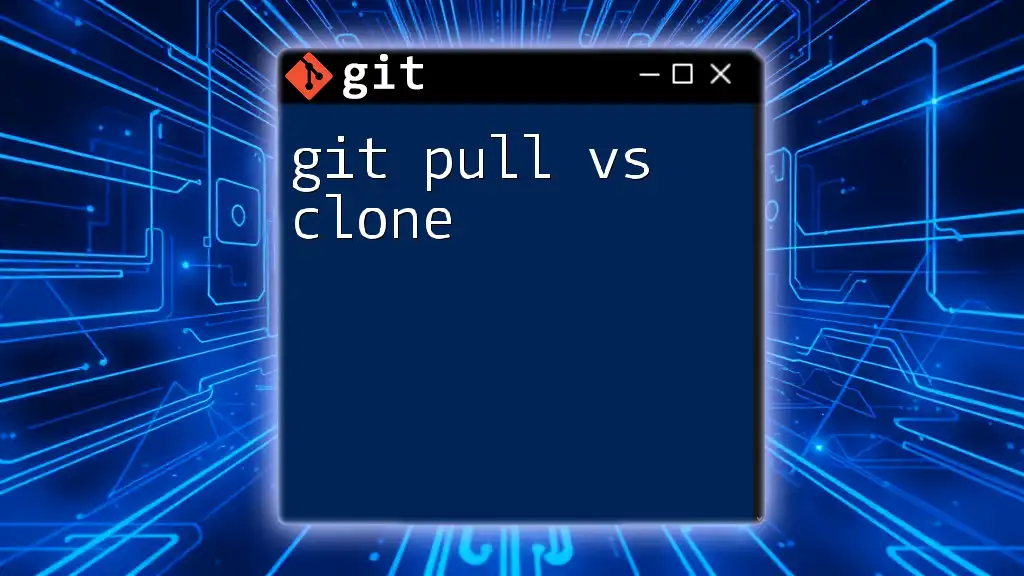After cloning a repository that contains submodules, you can initialize and update them using the following command:
git submodule update --init --recursive
Understanding Git Submodules
What are Git Submodules?
Git submodules are repositories nested inside another Git repository. They allow you to include and manage external libraries or other repositories, ensuring that specific versions of these submodules are maintained along with the main project. This can be particularly useful in large projects that rely on third-party tools or libraries.
Benefits of Using Submodules
Using submodules in your Git projects provides several advantages:
- Code Reuse and Modular Design: Submodules allow developers to include and reuse code across multiple projects without duplicating the codebase. This modular design enhances collaboration among teams.
- Better Organization and Management of Dependencies: With submodules, your dependency management becomes cleaner. By specifying a particular commit for a submodule, your main repository can remain stable even if the submodule's codebase changes.
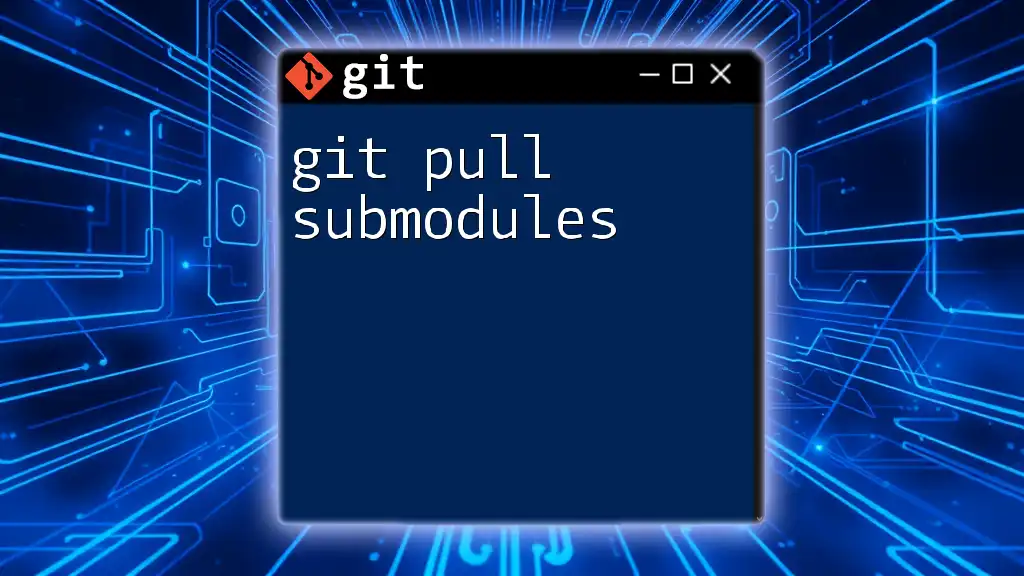
Cloning a Repository with Submodules
How to Clone a Repository with Submodules
When you clone a repository that contains submodules, it’s essential to include them to ensure that all necessary components are properly set up. You can effortlessly do this by using the `--recurse-submodules` option with the Git clone command.
git clone --recurse-submodules <repository-url>
This method automatically initializes and updates each submodule to the commit specified by the main repository.
Example of Cloning a Repository
Imagine you want to clone a project from GitHub that uses several submodules. Here’s a practical example:
git clone --recurse-submodules https://github.com/example/my-project.git
After executing this command, your local copy of `my-project` will include all submodules defined in its .gitmodules file. You can verify the structure by navigating through the cloned directory.

Pulling Submodules After Cloning
Why You Might Need to Pull Submodules
Even after successfully cloning a repository, you may find that the submodules are not in sync with the latest changes. Submodules can be updated separately from the main project, which can lead to the situation where your local version of a submodule is outdated. For instance, if development continues on a library you’re using as a submodule, updates will not automatically reflect in your project unless explicitly pulled.
Steps to Update Submodules
Using the Initial Command
After cloning a repository, you can perform an initial update of submodules using the following command:
git submodule update --init --recursive
Explanation:
- `update`: This command initializes and updates the submodules.
- `--init`: This option initializes any submodules that are not yet set up.
- `--recursive`: This ensures that if your submodules contain other submodules, those are also initialized and updated.
Pulling Changes from the Main Repository
To pull updates from the main repository after you have cloned it, you can use:
git pull origin <branch-name>
This command will fetch and merge changes from the specified branch of the main repository. However, the submodules will not automatically update unless you execute additional commands.
Updating Submodules to Latest Commit
How to Pull Submodule Updates
To ensure your submodules are at the latest commit, you need to pull updates explicitly using:
git submodule update --remote
Explanation:
- `--remote`: This option updates each submodule to the latest commit on the branch configured in the `.gitmodules` file.
Verifying Submodule Status
To check the status of submodules, use:
git submodule status
This command will display the current commit for each submodule, indicating whether they’re up to date with the main repository. You can see the commit hash and any modifications that might exist in a submodule.
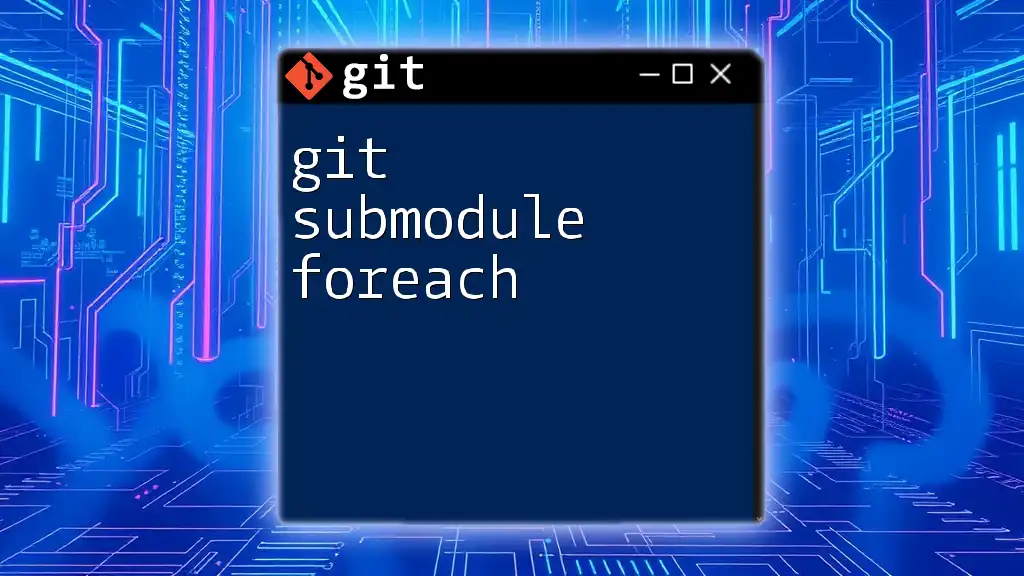
Troubleshooting Common Issues
Submodule Not Tracking the Correct Branch
Sometimes, submodules may not track the correct branch, which can lead to confusion. You can resolve this by navigating into the submodule directory and setting the appropriate branch:
cd <submodule-directory>
git checkout <branch-name>
This command changes the working branch of the submodule to the desired tracking branch.
Fixing Detached HEAD States
In some cases, you might encounter a detached HEAD state in your submodule, which means the submodule is not pointing to any branch but rather to a specific commit. To fix this, you can check out the desired branch:
cd <submodule-directory>
git checkout <branch-name>
This will reattach the HEAD to the branch and allow you to pull future updates.
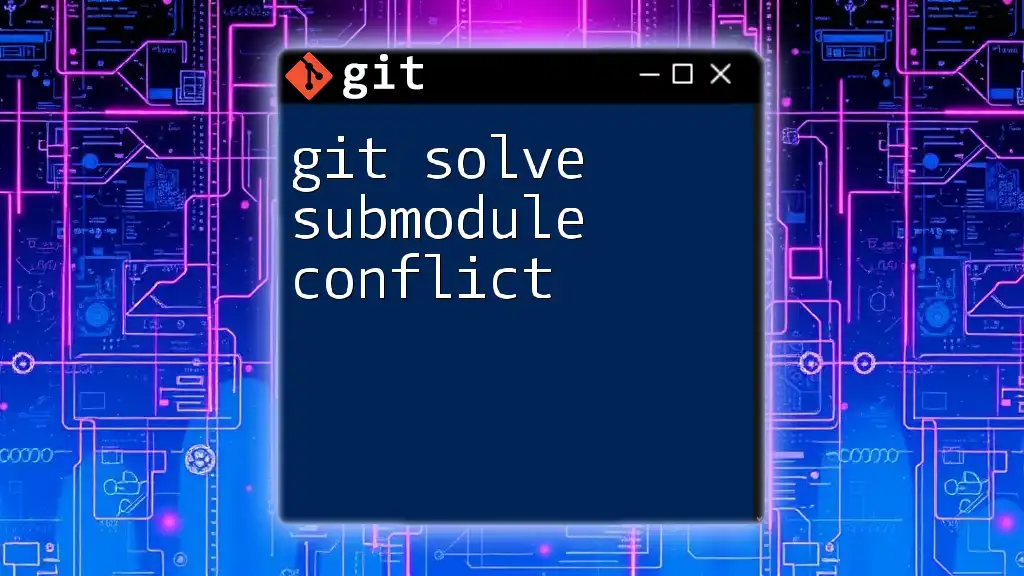
Best Practices for Using Git Submodules
Keeping Submodules Up-to-date
To keep submodules up-to-date, it is a good practice to regularly execute both `git fetch` and `git pull` commands in your submodules. The commands allow you to fetch and combine commits from the remote repository:
git fetch
git pull
Routine updates help avoid larger discrepancies that can complicate merge conflicts later.
When to Avoid Using Submodules
While submodules can be incredibly useful, there are certain situations where they may complicate development. For example, large teams working on separate components might benefit more from independent repositories instead of intertwining dependencies. Additionally, if a project requires the simultaneous development of multiple libraries, consider managing dependencies through package managers instead of submodules.
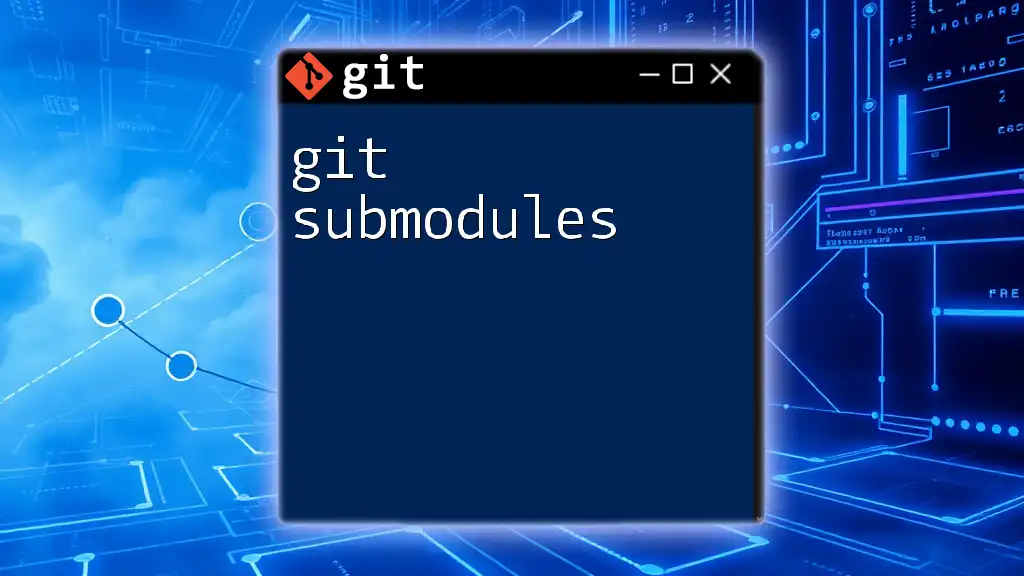
Conclusion
In this guide, we explored the process of using `git pull submodules after clone`, emphasizing the importance of keeping submodules updated to ensure project stability and reliability. We discussed not only how to clone repositories with submodules but also how to initialize, update, and troubleshoot them effectively. Mastering Git submodules is key for developers working collaboratively, and practicing these commands will make you more proficient in version control.
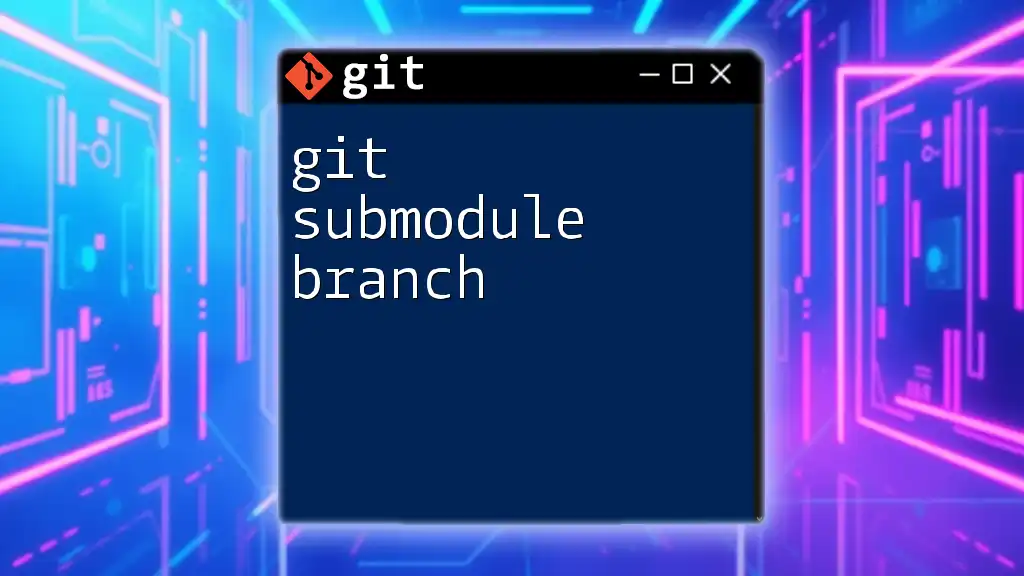
Additional Resources
For further reading, consider consulting the official Git documentation and exploring reputable online courses and community forums for a more profound understanding of Git practices and techniques. These resources can provide valuable insights into mastering Git and its powerful features.

